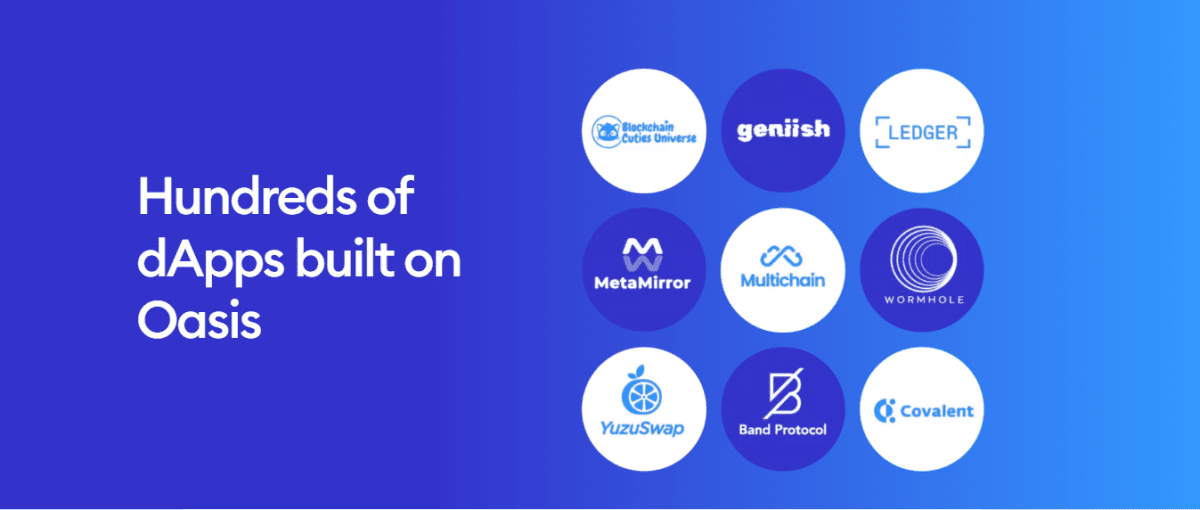Oasis Network: An Insight into ROSE

Oasis operates as an L1 network, emphasizing confidentiality, tailored for the DeFi market. Additionally, the Oasis Network distinguishes itself with its high-capacity throughput and a robust multi-layered design.

The Oasis Network provides a platform for developing and introducing Web3 solutions, suitable for diverse sectors like DeFi, GameFi, NFT, Metaverse, and DAO. Beyond that, the platform facilitates asset tokenization and the deployment of smart contracts.
To bolster its ecosystem, the Oasis Network, alongside its partners, has established a fund of $235 million. This fund aims to back projects that opt for this specific blockchain platform. Oasis Labs, a technical ally of the Oasis Network, collaborates with renowned firms including Meta, BMW Group, and Genetica. These collaborations are tailored to foster products that amplify personal data confidentiality while ensuring the safe transfer of vast data volumes.
Oasis Network's Founders and Team:
At the helm of Oasis Labs stands Dawn Song. She's recognized as a luminary in the realms of computer security and artificial intelligence and holds a professorship at the University of California, Berkeley.
The Oasis ensemble comprises world-class professionals. Many among them have had stints at global giants such as Apple, Google, Amazon, and Goldman Sachs. The majority of the team members boast advanced academic credentials and are committed to steering the Oasis network's growth.
Oasis Network's Architecture
The Oasis Network's design accentuates scalability and versatility. It incorporates a bifurcated structure, encompassing distinct consensus and ParaTime layers. Thanks to the integration of Tendermint Core, the network can nimbly manage its workload while ensuring swift transaction exchanges.
Specifically, the consensus layer is crafted for block chain assembly and transaction validation.
ParaTime essentially represents a network of autonomous environments designed for a variety of computations, storing code, and running applications. The ParaTime layer is decentralized, enabling any developer team to create their own solutions. Each distinct ParaTime can be specifically developed to manage particular data types or execute specialized tasks.
ParaTime essentially represents a network of autonomous environments designed for a variety of computations, storing code, and running applications. The ParaTime layer is decentralized, enabling any developer team to create their own solutions. Each distinct ParaTime can be specifically developed to manage particular data types or execute specialized tasks.
Currently, there are three distinct ParaTimes operating within the network, all initiated by the Oasis team:
- Emerald ParaTime is an EVM-compatible ParaTime, created to address issues of low network bandwidth and high transaction fees. With the aid of Emerald, the network's capacity has been bolstered to reach 1000 TPS, slashing the transaction fee by over 99% when compared to Ethereum's fees.
- Cipher ParaTime supports confidential smart contracts and provides developers with a Contract SDK.
- Sapphire ParaTime is tailored for the creation of confidential dApps and Web3 solutions.
Oasis Network's team believes their devised architecture surpasses other alternative network segmentation approaches or, for instance, the utilization of parachains.

Oasis Network stands as the prime environment for crafting dApps and confidential smart contracts. Source: oasisprotocol.org
Protection, Maintenance, and Creation of Confidential Data and Smart Contracts
Oasis Network has integrated a plethora of privacy-centric technologies. For instance, the Oasis Eth/WASI Runtime is a transparent example of a confidential ParaTime with open-source coding. It leverages secure enclaves to maintain the privacy of data during its processing.
Such enclaves are perfectly suited for both storing and executing smart contracts, thanks to the Trusted Execution Environment (TEE).
Encrypted data is relayed to this secure enclave alongside the smart contract. Here, the data gets decrypted, processed, and encrypted again prior to its return. This system ensures the user's personal data retains its confidentiality and remains immune to potential breaches by third parties, such as node owners or smart contract developers.
Oasis Network facilitates a fortified environment ideal for the secure storage of items like bank statements, financial reports, diverse records, medical charts, and social security numbers. Such features are not typically available on other blockchains.
Oasis Network and its ROSE Token
The principal Oasis Network employs the Proof-of-Stake consensus algorithm, which means it doesn't rely on mining but rather promotes staking.
ROSE is the inherent token of the Oasis Network. This token was launched in November 2020. ROSE is utilized for staking, transaction fee settlements, and for delegating consensus authority to validator nodes.
Of the total 10 billion ROSE tokens issued, 2.3 billion are reserved for staking rewards. The remaining tokens are in circulation and traded across various exchanges.
In terms of trade volume, ROSE stands fourth, trailing Monero, Dash, and Zcash, symbolizing a top-tier confidential network within the Privacy category. Its daily trade volumes typically range between $10–15 million or even more.
Sporting a market capitalization exceeding $283 million, ROSE holds the 109th position in CoinMarketCap's rankings.
Presently, ROSE is featured in various currency pairings across numerous CEX exchanges, including but not limited to Binance, Coinbase, HitBTC, ByBit, KuCoin, and Gate.
Investors
The Oasis Network project has received support from leading investment and venture funds, including Andreessen Horowitz (a16z), Accel, Binance Labs, Polychain Capital, Pantera Capital, DragonFly Capital, and more.

List of Oasis Network investors. Source: oasisprotocol.org

